#Henry William Greville
Photo
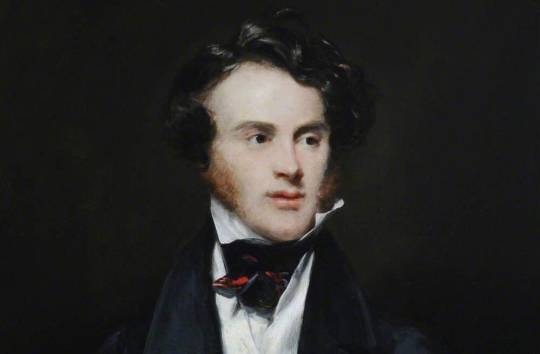
Henry William Greville (deceased)
Gender: Male
Sexuality: Gay
DOB: 28 October 1801
RIP: 12 December 1872
Ethnicity: White - English
Occupation: Aristocrat, writer, diarist
#Henry William Greville#lgbt history#gay people#mlm#lgbtq#male#gay#1801#rip#historical#white#english#aristocrat#writer#diarist
56 notes
·
View notes
Text

Henry ‘Chips’ Channon: The Diaries (Vol. 1), 1918-38, entry for 7th July 1923
—
Saturday 7th July
Gerry [Wellesley] motored me to Polesden Lacey ... Mrs Ronnie Greville's,¹ where I am for the weekend. A fashionable party here, but not at all my stunt .... Mrs Greville is a perfect hostess. She even plays golf despite her massive form, with the professional. The house is too luxurious and constipated ... it cannot digest so much rich furniture, rare tapestries, buhl² and objets de vertu ...³ and food that must make Lucullus⁴ jealous in Paradise. The Yorks honeymooned here ... what strange spell does Mrs Greville cast on royalties? I suspect it is her large fortune to which there is no heir ... or her colossal jewels???⁵
—
1. Margaret 'Maggie' Helen Anderson (1863-1942), daughter of William McEwan, Scottish brewing magnate. She married in 1891 Ronald Henry Fulke Greville (1864-1908), who became a Conservative MP; a close friend of Queen Mary, she was one of London's leading hostesses before and after the Great War, with weekend parties at Polesden Lacey, near Dorking in Surrey. Although always referred to as Mrs Ronnie Greville, she had become Dame Maragaret Greville in 1922.
2. Richly ornate French furniture of the late seventeenth and early eighteenth centuries designed by André Charles Boulle (1642-1732), the leading cabinet maker specialising in marquetry, one of whose main patrons was Louis XIV.
3. An antique object of especially fine workmanship.
4. Lucius Licinius Lucullus (118-57 BC) was a Roman politician and gastronome.
5. The jewels, including some allegedly owned by Marie Antoinette, were left in 1942 to Queen Elizabeth, the Queen Consort.
#chips channon#channon diaries#1923#1920s#gerry wellington#maggie greville#george vi#queen elizabeth the queen mother#polesden lacey
1 note
·
View note
Photo
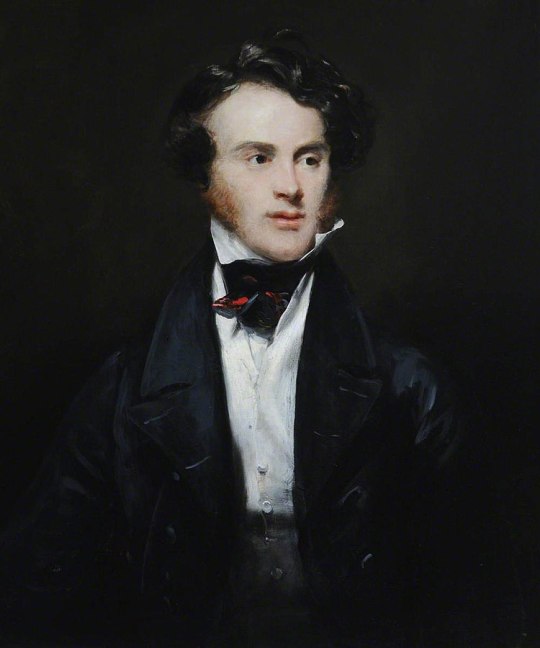
John Jackson (1778-1831) - Portrait of Henry William Greville (1801–1872) - 1830
Henry William Greville (28 October 1801 – 12 December 1872) was an English aristocrat and diarist.
John Jackson RA (31 May 1778 – 1 June 1831) was a British portraitist.
8 notes
·
View notes
Photo

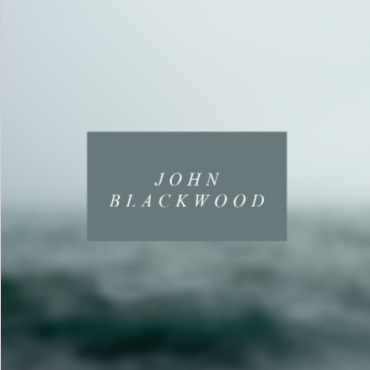
Captain John Blackwood, 34 * Tom Hardy
relationships: Nicholas Murray (former best friend/enemy), Cassandra Atwood (former fiancée/interest/enemy), Thomas Greville (crew), Edward Hardwick, Oliver Hardwick, Henry Pierce, Rebecca Marks, Ursula Varly (rival pirates). William Atwood (former friend), Alexander Vane, Francis Barlow (enemies)
john grew up poor
his father had lost all of his money in a bad investment and most of john’s childhood was spent watching his parents pretend that they had more money than they did - spending what they had on the latest fashions so they could still lead a respectable social life, while in private they didn’t always have food to put on the table
He was 5 years old when he was orphaned - and left with nothing
No one knew how little the Blackwoods had and when Mr. Murray (a close friend of John’s father) came to help settle the estate, he decided to take John in as his ward
John grew up with Mr. Murray’s son, Nicholas, and they lived as brothers.
John always knew that although he had grown up living like a prince, that one day, he would only have what little his parents had managed to leave him to live on and that he’d have to find a way to support himself
tbh that never really bothered john - he was grateful for the all that mr. murray had done for him - and leading a simple life, he thought, would suit him just fine
that is, until he met and fell in love with cassandra atwood
she was the only daughter of the wealthy governor and he knew that he would never agree to her marrying him
on the contrary, he hoped that he would marry nicholas murray instead
when nicholas and cassandra began their courtship, nicholas could tell that cassandra preferred john to him and so he stepped down
so john asked cassandra’s father for her hand and was unsurprised to hear that he absolutely forbade the match and that he blamed john for getting in the way of getting in the way of cassandra and nicholas
when mr. murray heard that john would not be able to marry the woman he loved because of money, he summoned both john and nicholas to him and told them that he would be leaving john with half of his own fortune, as there was more than enough for the both of them
this secretly enraged nicholas, who had always known that john was his father’s favorite (despite not being his actual son)
so nicholas stole an invaluable heirloom that had belonged to his mother (a ring that mr. murray cherished!) and he framed john for the act
he then confessed to his father that john had always been a thief and that there had been many things he had taken from him over the years, but nicholas had always been able to cover it up because he did not want to cause his father pain
enraged, mr. murray cast john from the house and threatened to have him arrested if he ever saw him again
john had lost his brother and his father in one fell swoop, but he still had cassandra
she told him she believed his innocence and that she still wanted to marry him
so they made plans to elope and run away together
john waited for hours at the church, but she never arrived
afraid that something terrible had happened, he snuck to her home, only to see her through a window - laughing and smiling with nicholas
it’s been ten long years and john has not stepped foot in port royal since
the years have not been kind to him - he spent the first of them drinking and brooding and he fell into a bad crowd as his sadness turned to anger
he joined a pirate’s crew and has since become the ship’s captain, himself
TruST literaLLY no ONE
treats his crew like shit b/c he no longer believes that people are good/knows that if he ever believes that again for a moment, it will be his downfall
he can be violent and cruel
now has a huge temper where once it took a great deal to provoke him
wants his enemies to pay for what they’ve done to him a million times over
heard that edward hardwick has has captured and means to ranson cassandra atwood which has drawn him back home
(tbh he’s unsure if he means to save her or kill her himself)
taken by kate aa.
4 notes
·
View notes
Text
character list:
Ashford, Jane/30
Atwood, William/30
Atwood, Cassandra/29
Barlow, Francis/29
Blackwood, John/28
Greville, Thomas/28
Greville, Elizabeth/27
Greville, Sybil/27
Greville, Cecily/26
Hardwick, Edward/26
Hardwick, Oliver/25
Langdon, Howard/25
Langdon, James/24
Langdon, Beatrice/24
Marks, Rebecca/23
Murray, Nicholas/23
Pierce, Henry/22
Tarleton, Roger/22
Valmont, Annamarie “Anna”/21
Vane, Alexander/21
Varly, Ursula/20
Vaughn, Matthew/20
Wentworth, Isabella/19
Wentworth, Elinor/19
Wimbridge, Florence/18
Wimbridge, Winifred/18
1 note
·
View note
Quote
Winters thought that the high point of literary expression had come and gone during the Renaissance, when “the tougher poets” like Fulke Greville wrote with a sense of rational order in the “plain style.” In the early eighteenth century, a decisive break had occurred—the start of what Winters branded Romanticism, defined as the misbegotten idea that “literature is mainly or even purely an emotional experience.” In the fullest statement of Winters’s views, “In Defense of Reason” (1947), a compendium of his earlier critical books, he railed against what he called “the fallacy of imitative form”—the tendency to express disintegration or uncertainty through language that itself exhibits those qualities. The “sound” alternative, Winters wrote, was to make a lucid statement “regarding the condition of uncertainty.” The “conscious author” and the pursuit of “formal perfection” emerged as desirable alternatives to “the fragmentary and unguided thought of the character, as he walks down the street, or sits in a bar, or dreams at night."The imitative fallacy was, in Winters’s view, close to being a national literary vice. In his studies of “American obscurantism,” collected in “Maule’s Curse” (1938), he outlined a choice between striving for lucidity and embracing wildness. The argument anticipated a still famous intervention made by Philip Rahv in the Kenyon Review the following year. Rahv identified “two polar types” corresponding to a “split personality” in American literature: the “paleface” and the “redskin.” (Today the terminology grates, like certain football mascots.) In his scheme, the paleface views life as a discipline and his country as a source of “endless ambiguities,” while the redskin views life as an “opportunity” and revels in “Americanism.” Many of the writers Winters most admired wound up in Rahv’s paleface pantheon—Hawthorne, Melville, Emily Dickinson, Henry James. (Winters also expressed a strong taste for the work of Edith Wharton.)
Leo Robson, “John Williams and the Canon that Might Have Been”
#leo robson#john williams#yvor winters#philip rahv#american literature#literature#fiction#poetry#literary theory#modernism#postmodernism#the canon#literary canon#romanticism
2 notes
·
View notes
Photo



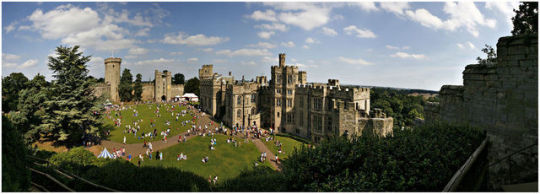
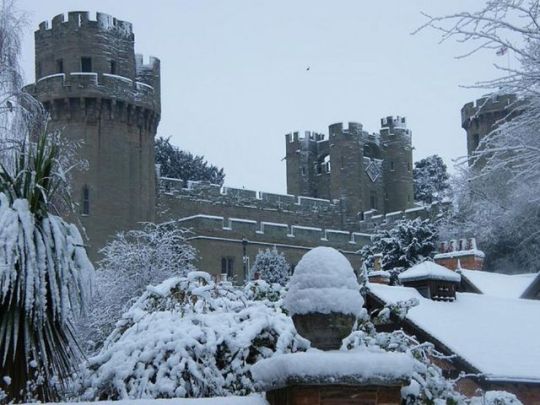
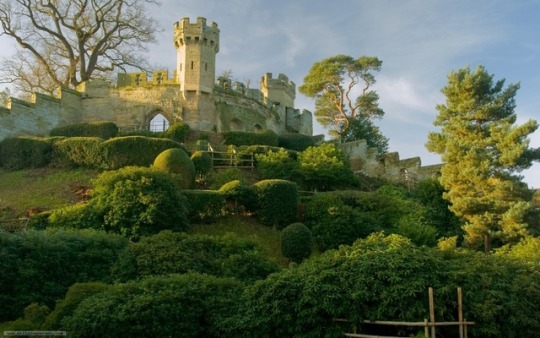

Castle's Rock - 08 April 2018
Warwick Castle
County town of Warwickshire, England
Warwick Castle is a medieval castle developed from an original built by William the Conqueror in 1068. Warwick is the county town of Warwickshire, England, situated on a bend of the River Avon. The original wooden motte-and-bailey castle was rebuilt in stone in the 12th century. During the Hundred Years War, the facade opposite the town was refortified, resulting in one of the most recognisable examples of 14th-century military architecture. It was used as a stronghold until the early 17th century, when it was granted to Sir Fulke Greville by James I in 1604. Greville converted it to a country house and it was owned by the Greville family, who became Earls of Warwick in 1759, until 1978 when it was bought by the Tussauds Group.
In 2007, the Tussauds Group was purchased by The Blackstone Group which merged it with Merlin Entertainments; Warwick Castle was then sold to Nick Leslau's investment firm Prestbury Group under a sale and leaseback agreement. Merlin continues to operate the site under a renewable 35-year lease.
Warwick Castle is situated in the town of Warwick, on a sandstone bluff at a bend of the River Avon. The river, which runs below the castle on the east side, has eroded the rock the castle stands on, forming a cliff. The river and cliff form natural defences. When construction began in 1068, four houses belonging to the Abbot of Coventry were demolished to provide room. The castle's position made it strategically important in safeguarding the Midlands against rebellion. During the 12th century, King Henry I was suspicious of Roger de Beaumont, 2nd Earl of Warwick. To counter the earl's influence, Henry bestowed Geoffrey de Clinton with a position of power rivalling that of the earl. The lands he was given included Kenilworth – a castle of comparable size, cost, and importance, founded by Clinton – which is about 8 kilometres (5 mi) to the north. Warwick Castle is about 1.6 kilometres (1 mi) from Warwick railway station and less than 3.2 kilometres (2.0 mi) from junction 15 of the M40 motorway; it is also close to Birmingham Airport.
An Anglo-Saxon burh was established on the site in 914; with fortifications instigated by Ethelfleda, daughter of Alfred the Great. The burh she established was one of ten which defended Mercia against the invading Danes. Its position allowed it to dominate the Fosse Way, as well as the river valley and the crossing over the River Avon. Though the motte to the south-west of the present castle is now called "Ethelfleda's Mound", it is in fact part of the later Norman fortifications, and not of Anglo-Saxon origin.
It was also at this time that what is now Warwick School was founded in the castle - making it arguably the oldest boys' school in the country. It still resides just over the river Avon, but a stone's throw away, and visible from all of the castle's towers.
2 notes
·
View notes
Note
I've been watching Harlots (thanks to your blog) and I was wondering if there are any famous 18th century prostitutes/harlots that I could look into. I consider you the authority on the history of sex work on this website. Thank you in advance!
Oh, I’m not the authority! I just read a lot haha. But I’d be happy to help! One of the great things about “Harlots” is that they created new characters, rather than using actual people, in order to tell the stories of all those women (and in some cases, men) whose names we will never know but still deserve to have their stories told. But London was a city that thrived on gossip and sexual celebrity. So, of course, there were women who got famous for their job. And bawds got famous, too, but they’re a different kettle of fish since they were famous because people loathed them.
Lavinia Fenton (1708-1760): She’s actually MORE famous for her acting career (she was the first actress to play Polly Peachum in “The Beggar’s Opera” and she really made the character her own) but she started out life as a child prostitute and considering “prostitute” and “actress” were synonymous at this point, it was intrinsic to her fame. She actually married a Duke, The Duke of Bolton, who was 23 years older than her but had been waiting for his wife to die so he could marry Lavinia. They had a few children together. There’s a great book about her called “Mistress Peachum’s Pleasure.”
Peg Plunkett (1727-1797): Okay, so we’re straying over to Ireland here because Peg was born in Westmeath. She wasn’t a prostitute, per se: she’d had to sell herself as a young woman (she became pregnant consequently) to pay for her family but she didn’t live in a brothel. But when she was young-ish, she started a brothel with her friend, Sally Hayes, in Dublin (kind of similar to how Margaret and Nancy started Margaret’s brothel in “Harlots”) and it was incredibly popular. Sometimes, she’s known as Margaret/Mags Leeson because she took on the name of her aristocratic lover, the Earl of Milltown. She compiled her memoirs into three volumes and it was published as “The Memoirs of Mrs. Leeson” and it was an instant success. Again, there is another brilliant book about her called “Peg Plunkett: Memoirs of a Whore” and she’s a real character. A sex worker and a bawd all rolled into one. And she records the first ever instance of a foot fetish but I don’t know if I thank her for that.
Betsy Careless (1704-1739): One of my personal favourites, I love Betsy. Betsy started a child prostitute. Henry Fielding wrote that he had seen her accompanying a rake to the theatre when she was about 12 years old and he’d seen her in bed with the same rake a few days earlier; she was drinking, smoking tobacco and swearing like a sailor. As she got older, her reputation as a beautiful, loose woman, the toast of every sexually depraved man in London, came to its pique. In one anecdote from her life, an admirer complimented her legs, saying that they were so alike in beauty “they must be twins,” to which she replied “Oh, no, sir! For I always have more than one or two between ‘em.” If you were a man of taste looking for a wild night with a courtesan, you sought out Betsy Careless. By her late 20s, though, she was considered “worn out” so she decided to open a brothel and a bagnio (sexy coffeehouse). It was not as successful as her previous career and she died in a poorhouse at the age of about 35, presumably from venereal disease. In Hogarth’s “The Rake’s Progress,” one of the inmates in Bedlam can be seen carving her name into the stone steps, in the last panel.
Kitty Fisher (1741-1767): She is considered to have been one of the first “pin-up” glamour girls (I’d argue otherwise: Charles II’s mistresses in the late 17th century were the first, imo) and maybe the first woman who was famous simply for being....famous? I think that could be said for all of these women but her fame stemmed from the hysteria in the media over her glamorous lifestyle. She was a prostitute firstly but was quite choosy in that she only slept with men of wealth and consequence. And....that made her famous. And as such, people wanted to know what she was wearing, who she was sleeping with etc. etc. She was invited to society parties and Casanova claimed that he saw her eat a bank note worth one thousand guineas on a piece of buttered bread.
Sally Salisbury (1692-1724): She began as a “bunter” a.k.a streetwalker at a young age, selling both sex and pamphlets. She had to turn to the trade after she was accused of stealing a piece of lace from the seamtress she worked for as a child. After falling in with several notorious men, she was taken in at age 14 by the bawd, Mother Wisebourne, though later on in life, she would move to Wisebourne’s rival, Mother Needham. She was extremely popular, earning a name for herself due to her wit and her beauty. She often spent time in prison but also managed to avoid it sometimes by making the judge of her case fall in love with her. In 1722, in an altercation, she accidentally stabbed her friend, John Finch. She was sentenced to spend a year in Newgate Jail but she died there from venereal disease. She inspired Hogarth’s character, Moll Hackabout, from “The Harlot’s Progress” panel paintings.
Emma/Amy/Emy Hamilton/Lyon/Hart (1765-1815): No one is really sure what Emma’s real name was, although we assume it was Amy/Emy Lyon. She worked in various domestic servant roles as a young girl and she became a maid for actresses working in Drury Lane Theatre. She was immersed in the unsavoury underbelly of London when she became a dancer at the “Temple/Goddess of Health,” run by a quack sexologist. Then she became mistress to Sir. Harry Featherstonehaugh, as well as being like, a live-in “hostess” (and by “hostess” I mean Sir. Harry kept her naked all the time so she could impress him and his friends). One of his friends, Charles Greville, became her next keeper and she was kept in style by him for a long time. He encouraged her to change her name to “Emma Hart” to sound more respectable. He encouraged George Romney to paint all those beautiful portraits of her but in the end, Greville got bored, encouraged his older uncle, Sir. William Hamilton, the ambassador to Naples, to take her off his hands (Sir. William collected curiosities and saw Emma as another acquisition) and, when Sir. William fell in love with Emma, encouraged their marriage. In Naples, Emma would meet Lord Nelson and the rest is history, since he was the only man who treated her well.
I was also going to include Mary Robinson on this list, because she was similar to Emma Hamilton in that she embodied sexual celebrity and had lots of seriously high profile admirers and lovers. But she, by all accounts, was not a prostitute (though, obviously, she was a sex worker in some capacity as she was mistress to many men of consequence) at any point in her life (Emma Hamilton was one of her maids when Mary worked as an actress btw). She’s buried in a churchyard near me and I visit her grave often to leave flowers.
39 notes
·
View notes
Photo

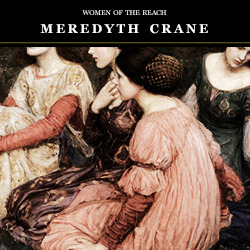
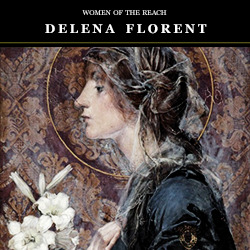
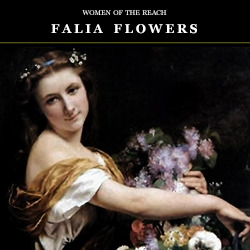
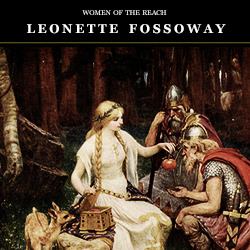
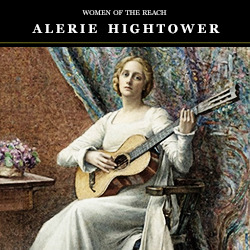
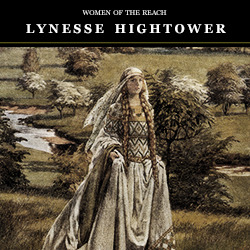


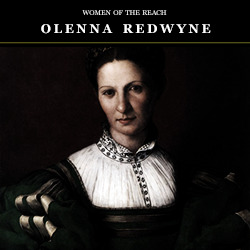
Women of the Reach
Alysanne Bulwer, Lady of Blackcrown, daughter of Jon Bulwer and Victaria Tyrell.
Meredyth Crane, lady-in-waiting of Margaery Tyrell.
Delena Florent, daughter of Colin Florent, wife of Hosman Norcross, and mother of Edric Storm and Alester and Renly Norcross.
Falia Flowers, bastard daughter of Humfrey Hewett and lover of Euron Greyjoy.
Leonette Fossoway, wife of Garlan Tyrell.
Alerie Hightower, daughter of Leyton Hightower, wife of Mace Tyrell, and mother of Willas, Garlan, Loras and Margaery Tyrell.
Lynesse Hightower, youngest daughter of Leyton Hightower, wife of Jorah Mormont, and concubine of Tregar Ormollen.
Malora Hightower, eldest daughter of Leyton Hightower.
Desmera Redwyne, daughter of Paxter Redwyne and Mina Tyrell.
Olenna Redwyne, wife of Luthor Tyrell and mother of Mace, Mina, and Janna Tyrell.
164 notes
·
View notes
Text
2017: Feb 5 - 11
Read
036. The Third Reich At War by Richard J. Evans
037. The Reluctant Fundamentalist by Mohsin Hamid
038. Anthropology from a Pragmatic Point of View by Immanuel Kant
039. Pippi Longstocking by Astrid Lindgren
040. The Little Sister by Raymond Chandler
041. Our Mutual Friend by Charles Dickens
042. The Concept of Anxiety by Søren Kierkegaard
043. Soldiers' Pay by William Faulkner
044. Mosquitoes by William Faulkner
045. The Secret History of Wonder Woman by Jill Lepore
046. I, Robot by Isaac Asimov
047. “Greville Fane” by Henry James
048. Le Bourgeois Gentilhomme by Molière
Seen
146. The Mark of Zorro (1920/Fred Niblo)
147. Svengali (1931/Archie Mayo)
148. Half Angel (1951/Richard Sale)
149. Something Wild (1961/Jack Garden)
150. The Stranger (1967/Luchino Visconti)
151. Lucky Number Slevin (2006 /Paul McGuigan)
152. Wuthering Heights (1988/Yoshishige Yoshida)
153. The Millionairess (1960/Anthony Asquith)
154. Rosaura at 10 O’Clock (1958/Mario Soffici)
155. King of the Hill (1993/Steven Soderbergh)
Best experiences in bold, worthwhile ones are linked
0 notes